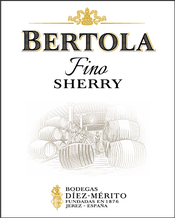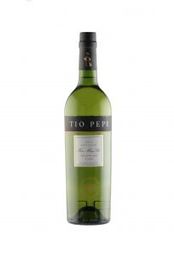|
|
 |

We’re now far enough into summer that you may be looking to switch things up when searching for wines suitable for sipping in hot weather.
If you’re a dedicated wine lover, odds are that you’ve already hit the usual suspects, such as Rosé from Provence, Sauvignon Blanc from Sancerre, dry Riesling from Germany or Australia, Assyrtiko from Greece, Grüner Veltliner from Austria, or Fiano from southern Italy.
Of course, this list could be lengthened with ease, but there’s a pretty reliable way to know when you’ve run the gamut on white wines for summer: Once you’re resorting to cheap Pinot Grigio, it is time for radical change.
On the red side, there are plenty of good choices, provided that you give your bottles a 20-minute chill before cracking into them. Dolcetto from Italy is a great choice, and Mencía from Bierzo in Spain can also be terrific. Austria rocks with refreshing reds made from Zweigelt and St.-Laurent, and there are certainly other good, chill-able reds.
But if you’ve already run though most of these already, you should be getting desperate. Again, easy to know if you’re desperate: Have you been drinking entry-level Beaujolais?
As drinking Pinot Grigio or Beaujolais Villages with prove, it is not good to be desperate, with one very important exception: Being desperate pries open your mind to trying new, possibly unlikely alternatives.
Here are two to consider:
Fino or Manzanilla Sherry: Both of these are very dry, nutty renditions of Sherry that are among the world’s best aperitifs. The two are virtually the  same, but Manzanilla is produced and matured around the town of Sanlúcar de Barrameda, closer to the sea than Jerez, from where almost all Fino originates. Both are matured in casks for at least 2 years, though aging of 3 to 5 years is much more common. My current favorite, Bertola Fino from Diez - Mérito, is aged for eight years...and at $20 for a full-size, 750 ml bottle, is a steal in view of its high quality and what is required to produce it. This house also makes a Fino called "Pemartín" that is very fresh and briny and rings up for just $14.
As a result of their maturity, these wines don’t have character you’d usually seek out in young white wines for hot weather, but they’re still incredibly refreshing, with lots of acidity and a capacity to work well when served very cold (though they’ll become more complex as their temperature rises, and thus are really fun to scrutinize over time at an outdoor café).
Granted, some people just can’t cozy up to Sherry’s unique aromas and flavors, but the sad fact is that millions of people who would adore this famous drink don’t know--for failure to try it.
Please, try it. Classic pairings for nibbling along with a Fino or Manzanilla  before dinner would include almonds, fried squid or fish (smoked fish too), olives, sushi, oysters, cured salami or ham--basically, anything you’d find as an appetizer in a Spanish tapas restaurant, but lots more as well. This is a fortified wine type, but the finished alcohol is only about 15% or a little more, which is barely any higher than, say, California Chardonnay and lower than many California reds. In addition to Diez - Mérito's Bertola Fino, two of the very best renditions of this genre are also among the easiest to find and purchase: “Tio Pepe” Fino from Gonzalez Byass, and “La Gitana” Manzanilla from Bodegas Hidalgo. All three of these are consistently excellent, and ridiculously under priced relative to their quality, simply because Sherry is out of fashion (because so many people don’t know better). before dinner would include almonds, fried squid or fish (smoked fish too), olives, sushi, oysters, cured salami or ham--basically, anything you’d find as an appetizer in a Spanish tapas restaurant, but lots more as well. This is a fortified wine type, but the finished alcohol is only about 15% or a little more, which is barely any higher than, say, California Chardonnay and lower than many California reds. In addition to Diez - Mérito's Bertola Fino, two of the very best renditions of this genre are also among the easiest to find and purchase: “Tio Pepe” Fino from Gonzalez Byass, and “La Gitana” Manzanilla from Bodegas Hidalgo. All three of these are consistently excellent, and ridiculously under priced relative to their quality, simply because Sherry is out of fashion (because so many people don’t know better).
20 Year-Old Tawny Port: Yes, I know…you think I’m crazy for recommending a second fortified wine type as a hot-weather choice. In light of the sad fact that most people suffer from the mis-impression that Port is solely a cold-weather drink, I understand your skepticism, and take no offense. But I’m not crazy…and I can prove it.
First, you probably don’t know that, in Portugal, aged tawnies are served chilled. I didn’t know this myself until I first traveled to Portugal, and I was amazed--but immediately convinced of the wisdom of this. Chilling knocks  down any alcohol-based aromatic notes while also heightening the acidity in the wine, which can really make this the perfect after-dinner drink for pairing with summer desserts (or as desserts in itself). down any alcohol-based aromatic notes while also heightening the acidity in the wine, which can really make this the perfect after-dinner drink for pairing with summer desserts (or as desserts in itself).
Additionally, if you spring for really good aged tawny (which I define as the 20 Year-Old designation), the wine will have lightened from all that maturation time, both in color and in palate impact. Aged tawnies are not the powerhouse wines that most people think of when hearing, “Port.” On the contrary, they are among the most intricate and finesse-filled wines in the world, and these intricacies bloom as the wine warms after pouring. You’ll discover your personal temperature preference if you start with a chilled glass and then return to the wine repeatedly as it gradually sheds its chill.
Two pieces of advice: Beware of ordering aged tawnies in restaurants, as they’re rarely served chilled, and are often poured from bottles that have been open for too long to show at their best. Also, store the bottle you buy ($50 - $60 for a bottle of 20 Year-Old) in your refrigerator, standing upright. The price might seem high, but not when you consider 20 years of inventory carrying costs for producers, and also when you consider the fact that you can continue to pour tastes from a chilled bottle for up to a month without the wine showing any notable degradation in quality (both because it has already been oxidized during the long maturation process, inoculating it against additional oxidation, and also because quality will be retained because you’re keeping the wine chilled--unlike almost every restaurant).
As with Sherry, getting a good bottle of 20 Year-Old is easy, indeed, even easier. All of the houses listed below make very good products, and though they don’t like to disclose this, the houses often swap stock when they’re looking to assemble enough wine for a bottling run. So, you don’t need to be too picky about whose wine you buy. The one trick is to always buy from a retailer with fairly rapid turnover. Once tawnies are bottled, they don’t improve from further maturity but rather degrade slowly, so you want a fresh bottle. Here’s a list of top producers, in alphabetical order: Cockburn’s, Dow’s, Ferreira, Fonseca, Graham’s, Kopke, Ramos Pinto, Sandeman, Taylor Fladgate, Quinta do Noval and Warre’s.
An evening bookended by Fino or Manzanilla Sherry at the outset and 20 Year-Old Tawny Port at the conclusion will get you out of your summer rut…and into a lifetime of enjoying two of the wine world’s greatest treasures.
|
 |
|